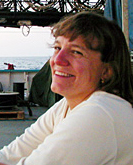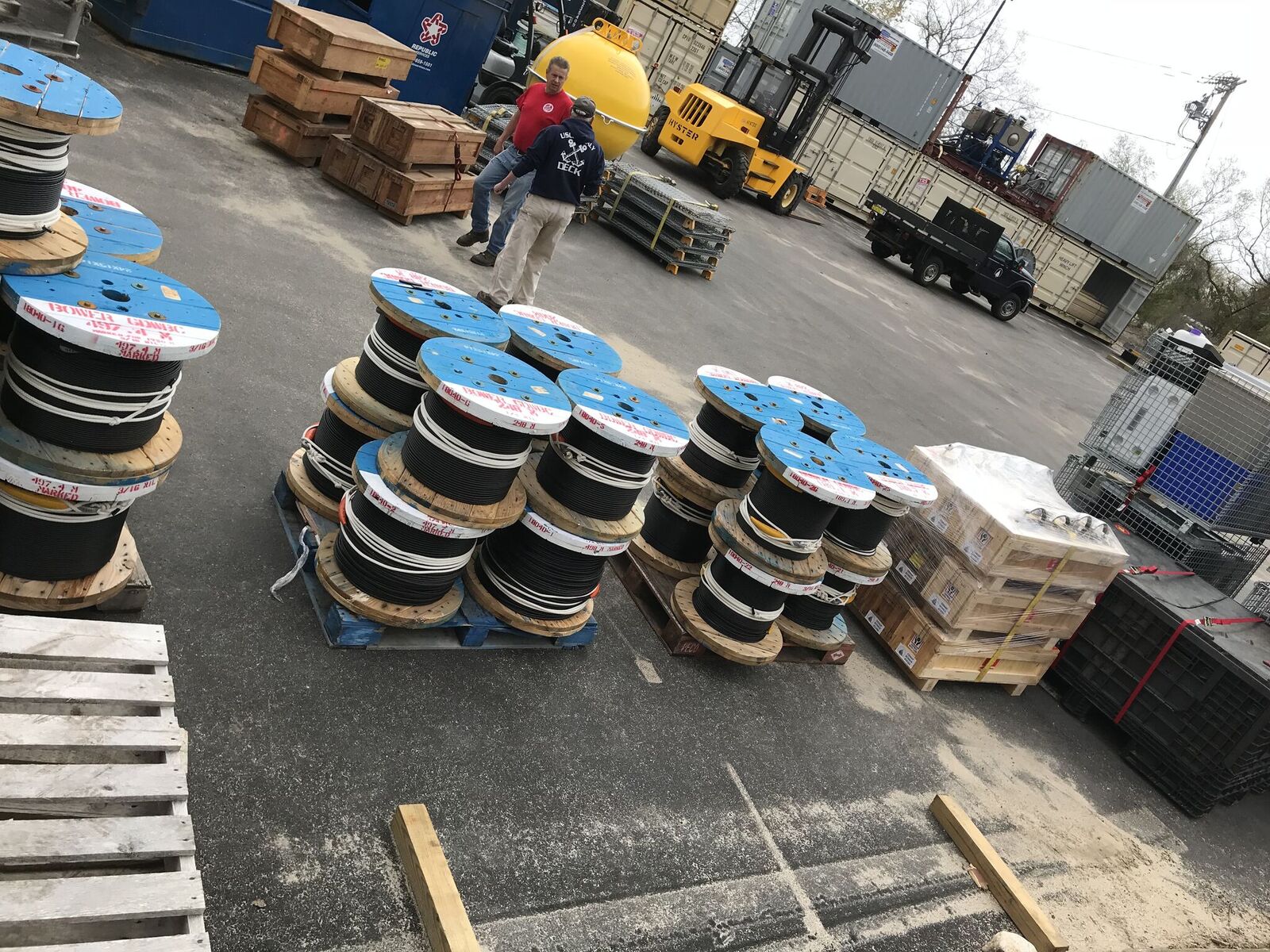We are a week into this cruise now, and the weather has still been amazingly cooperative. Every now and then, the winds pipe up to around 20 knots (short for nautical miles per hour—mariners and fliers measure distance in nautical miles while landlubbers use statute miles—the nautical mile is about 15% longer than a statute […]
Read More
This research cruise is dedicated to four different projects, of which ours is just one. The primary activity is the annual replacement of the Ocean Observatories Initiative (OOI) moorings in the Irminger Sea, which is located east of Greenland. The Irminger Sea Array is part of the much larger OOI project with long-term observing sites […]
Read More
A typical cabin on a research vessel looks mostly like a college dorm room—bunk beds, a desk, drawers and lockers for clothes, and that is about it. Most often, the two who share the cabin also share a bathroom (called a head in boat language) with two people from another cabin. Sometimes several cabins share […]
Read More
Blind people who use a smart phone are likely taking advantage of one of the most important new technologies of the past couple of decades, that is, the Global Positioning System (GPS for short). What is the GPS anyway? The GPS is a large number of satellites orbiting the Earth that allow you to find […]
Read More
In my last post, I described the main goal of our upcoming research cruise on the R/V Armstrong, that is, to set up four deep-sea moorings in the ocean east of Greenland. These moorings will have sensors on them to measure the water temperature, salinity, and the speed and direction of the currents. They will […]
Read More
In some ways, today is the real first day of the upcoming oceanographic research cruise on the R/V Armstrong. This is the day that all the equipment for the cruise is being loaded into a shipping container that will be trucked to Portland, Maine and loaded onto a container vessel headed for Iceland. The Armstrong […]
Read More
It has been four years since my last oceanographic research cruise. It was July 2014 when I joined fellow scientists and graduate students in Iceland to board the Research Vessel Knorr to kick off an international expedition to put in place a huge coast-to-coast array of instruments across the North Atlantic Ocean. This array of […]
Read More
The ever-growing demand for oil and gas to fuel our cars, heat and air-condition our homes, transport ourselves overseas and power our iPhones has motivated oil companies to search for these fossil fuels almost everywhere on Earth, even under the ocean floor. This includes the Gulf of Mexico, where rich reserves have been pumped from […]
Read More
A couple of weeks ago, I was invited on an “ADA (Americans with Disabilities Act) tour” of a brand new oceanographic research vessel, the R/V Sikuliaq. Commissioned by the U.S. National Science Foundation (NSF), the Sikuliaq will be operated by the University of Alaska. It’s ice-strengthened hull will allow it to work in the Arctic […]
Read More
Sorry for the delay in blog posts. Ever since we started heading for the Bight Fracture Zone, I’ve been busy with the onboard work, and it’s been quasi rough. That is all behind us now, as we are safely tied up to the dock in Reykjavik, Iceland. Cruise kn221-02 is officially over, and my colleagues […]
Read More
About Amy Bower
 Amy Bower is a physical oceanographer at the Woods Hole Oceanographic Institution. She has been chasing ocean currents in the Atlantic and Indian Oceans for over 25 years, primarily by releasing acoustically tracked floats far below the sea surface. Legally blind since her mid-20s, Amy uses adaptive technology to continue her research.
Amy Bower is a physical oceanographer at the Woods Hole Oceanographic Institution. She has been chasing ocean currents in the Atlantic and Indian Oceans for over 25 years, primarily by releasing acoustically tracked floats far below the sea surface. Legally blind since her mid-20s, Amy uses adaptive technology to continue her research.
Related Links


